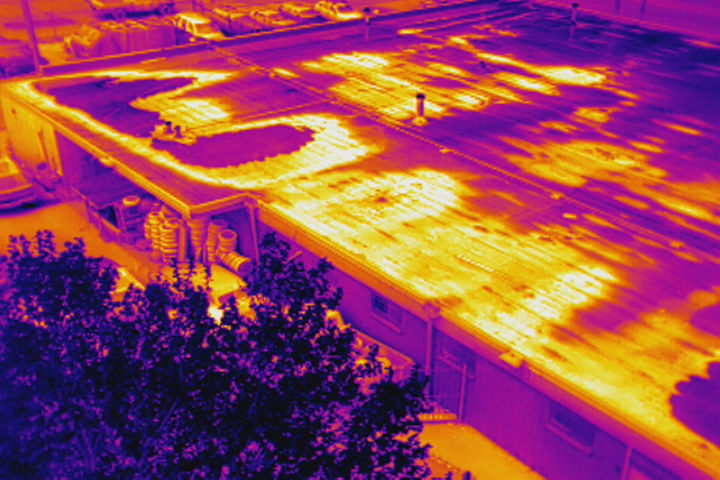Peering Beneath the Surface: The Significance of Level II Assessments in Building Envelopes
- nexusbec
- Nov 4, 2024
- 4 min read
Think of a Level II Assessment as a corroboration of the Level I effort. Sometimes these efforts can happen in unison, or Level II may be implemented if the owner wants answers that a Level I Assessment cannot offer. The ultimate goal is to provide you with clear, actionable insights and solutions that address both the symptoms and the underlying causes of building envelope problems the primary difference is that a Level II Assessment involves digging into the unseen parts of the building envelope.
The ultimate goal is to provide you with clear, actionable insights and solutions that address both the symptoms and the underlying causes of your building envelope problems
Our project managers are not just coordinators, they are your dedicated partners in ensuring the integrity and performance of your building’s envelope. They work closely with you to understand your specific concerns, goals, and the unique characteristics of the building. By developing a deep understanding of your building’s history, usage, and current issues, our project managers tailor their approach to meet your exact needs.
Armed with a wide array of diagnostic tools and industry-leading expertise, they oversee every aspect of the assessment and remediation process. Whether it’s utilizing advanced infrared imaging, conducting water and air testing according to ASTM standards, or leveraging drones and other specialized equipment to access hard-to-reach areas, our project managers ensure that the right tools are used for the right job.
By combining technical proficiency with a collaborative approach, our project managers deliver results that not only solve immediate issues but also enhance the long-term performance and durability of your building. Sometimes, this means there needs to be a more comprehensive, exploratory assessment on your building to discover the root of the issue.
For a comprehensive Level II Assessment, having staff with the right certifications and experience is crucial to ensuring the accuracy and safety of the process. Here is when and why each certification is essential:
FAA Drone Pilot Certification: When it comes to investigating large or complex buildings, or when accessing certain areas is too risky or impractical, drones provide an invaluable alternative. Our FAA-certified drone pilots are trained to operate drones safely and effectively, capturing high-resolution visible light and infrared imagery from the air. This capability not only enhances safety by reducing the need for manual access but also allows us to gather comprehensive data from angles and perspectives that would otherwise be impossible to achieve. Drones are particularly useful for large-scale infrared imaging and general building envelope assessments, ensuring we can spot potential issues with minimal disruption.
Certified Infrared Thermographers: Infrared imaging is a non-invasive method used to detect thermal anomalies that indicate issues like moisture intrusion, insulation gaps, or air leaks. Our team includes certified infrared thermographers who have both technical expertise and years of experience in the building envelope industry. Their ability to interpret the sometimes-subtle findings hidden within thermal images accurately is critical in diagnosing problems without causing unnecessary damage to the building. Thermal images are a powerful tool for pinpointing where exploratory openings will yield the most useful information. This certification ensures that our infrared assessments are not only precise but also aligned with best practices, leading to more effective problem-solving.
ASTM Standards Expertise for Air and Water Testing: Air and water testing are fundamental to replicating the conditions that might lead to failures in building assemblies. Our staff are well-versed in the latest ASTM standards, which govern how these tests should be conducted to simulate real-world stresses on a building’s envelope. By adhering to these standards, our team can ensure that the tests accurately replicate the issues being experienced, providing reliable data that informs the best course of action. This expertise is particularly critical for verifying the performance of windows, doors, and other envelope components under conditions similar to those they will face in practice.
Rappelling and Lift Operation Certifications: Accessing hard-to-reach areas like rooftops, tall facades, or other elevated structures requires more than just skill—it demands proper safety training. Our team members are certified in rappelling and lift operation, allowing them to safely and efficiently reach even the most inaccessible parts of a building. This expertise is vital when performing roof cores and exploratory openings, where precision and safety are paramount. By being able to directly access these areas, our team can perform thorough inspections and gather the necessary data without compromising safety.
Each of these certifications, licenses, and standards plays a crucial role in our ability to conduct thorough, accurate, and safe Level II Assessments. Whether it’s ensuring safety at height, capturing detailed imagery with drones, accurately interpreting thermal data, or conducting rigorous air and water tests, our certified staff are equipped to deliver results that you can trust.

Infrared thermographic image showing areas of entrapped moisture (the bright areas) within a low-slope roof.

Preparing a window assembly for a water penetration test using a negative pressure chamber on the interior.

One of our drones outfitted with both infrared and visible light imaging capable of providing targeted aerial views of buildings.




















